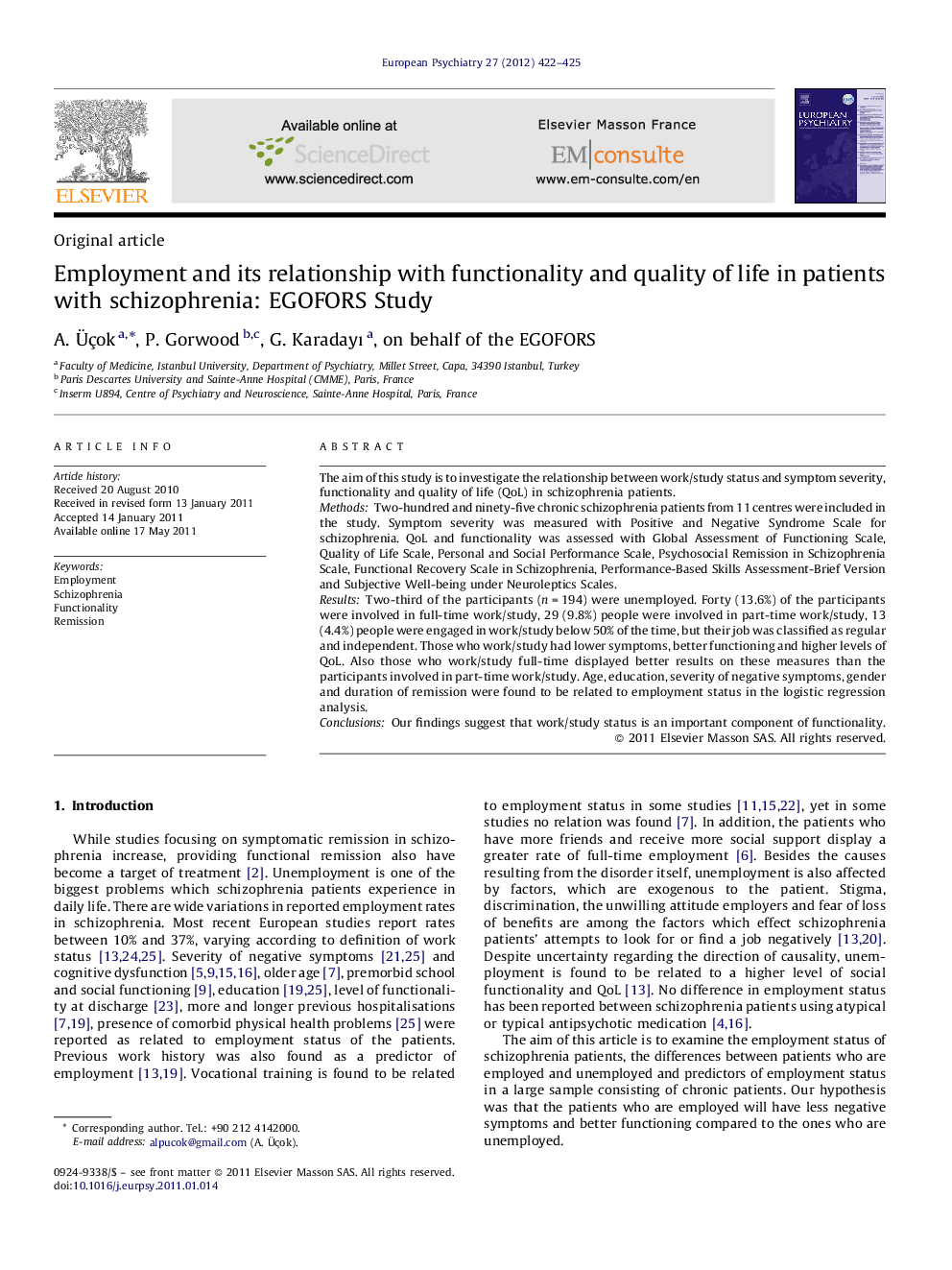| کد مقاله | کد نشریه | سال انتشار | مقاله انگلیسی | نسخه تمام متن |
|---|---|---|---|---|
| 4184388 | 1277313 | 2012 | 4 صفحه PDF | دانلود رایگان |

The aim of this study is to investigate the relationship between work/study status and symptom severity, functionality and quality of life (QoL) in schizophrenia patients.MethodsTwo-hundred and ninety-five chronic schizophrenia patients from 11 centres were included in the study. Symptom severity was measured with Positive and Negative Syndrome Scale for schizophrenia. QoL and functionality was assessed with Global Assessment of Functioning Scale, Quality of Life Scale, Personal and Social Performance Scale, Psychosocial Remission in Schizophrenia Scale, Functional Recovery Scale in Schizophrenia, Performance-Based Skills Assessment-Brief Version and Subjective Well-being under Neuroleptics Scales.ResultsTwo-third of the participants (n = 194) were unemployed. Forty (13.6%) of the participants were involved in full-time work/study, 29 (9.8%) people were involved in part-time work/study, 13 (4.4%) people were engaged in work/study below 50% of the time, but their job was classified as regular and independent. Those who work/study had lower symptoms, better functioning and higher levels of QoL. Also those who work/study full-time displayed better results on these measures than the participants involved in part-time work/study. Age, education, severity of negative symptoms, gender and duration of remission were found to be related to employment status in the logistic regression analysis.ConclusionsOur findings suggest that work/study status is an important component of functionality.
Journal: European Psychiatry - Volume 27, Issue 6, August 2012, Pages 422–425